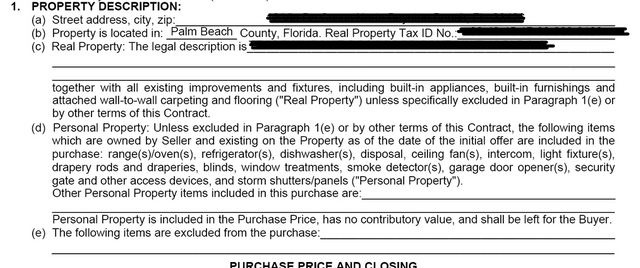ScaredyCatGuide to Real Estate Investing – The Final Walk Through Before Buying Your Property
One of the last things we will do when purchasing a property is a final walk through. This usually occurs anywhere from a week to a day before closing and is done to ensure everything in regard to the property is still as expected per the contract.
To arrive at this point means we have already done the inspection, appraisal, title search and estoppel. Any issues arising from those items should have been worked out or negotiated with the seller by now.
If you missed any of those posts and the possible scenarios you can run into – you may find them here:

Final Walk Through
Either your agent or the seller’s agent will take you for the final walk through of a property. There are several items we want to check when doing this to avoid any problems at closing.
Visual Inspection
As you walk through the property visual inspect everything to make sure it’s in the condition it should be.
- Are there now broken floor tiles that were previously in fine condition?
- A broken window or maybe damaged sheet rock in a bedroom?
- Damage to the exterior siding?
These are just examples of things than can pop-up. Just because a seller is supposed to keep the property as is when the contract is signed does not guarantee they will. The walk through gives us the opportunity to discover any potential surprises before signing the closing documents
Items that Convey
This will be listed in the contract and basically states what items will stay with the property upon sale. It can be anything from furniture to lighting fixtures.
Items you generally see convey are:
- Washer/dryer, appliances, garage door openers, smoke detectors, ceiling fans, blinds, storm shutters, security gate and other access devices.
Usually it will be listed within the Property Description section of a contract as seen below.
There is a line item (line d of example) to add any additional items that may not already be listed in a given contract.
An example would be when furniture is part of the purchase.
There is also a line item (line e of the example) for items that will not be included.
For example, if the seller is taking the appliances with them or the upgraded lighting fixtures they installed.
Therefore, when you are doing the walk through not only do we need to check the property’s condition, but that everything that should be there is.
- Is an appliance missing that conveys in the contract?
- How about that beautiful chandelier?
Repairs
If there were any needed repairs discovered during the inspection and we negotiated that the seller is to have them done before closing – The walk through is a very good time to verify that.
When items are discovered during an inspection there are two things that can happen.
- The seller gives the buyer credits at closing for the expense of those repairs
- The seller has those items remedied by closing
If it is the latter then verify that any expected repairs have in fact been done.
Final Thoughts
Along with paying mind to the above items, be sure to spot check anything you can. Flush the toilets, turn on the heat and/or air conditioning, etc.
On regular sales the power and water should still be on. If it’s a foreclosure we are purchasing then it may not be an option.
However – if possible I turn on the utilities during the inspection portion of a foreclosed property purchase to get a full account of the condition and functionality, especially if it’s a vacant property as the status should remain the same with the exception of blatant vandalism.
Home Stretch
We are just about ready to close on our property!
Regards,
Mitchell J
Download the Property Calculator for free at ScaredyCatGuide website.

Good advice
Thanks! Just hope others can learn from my experiences.